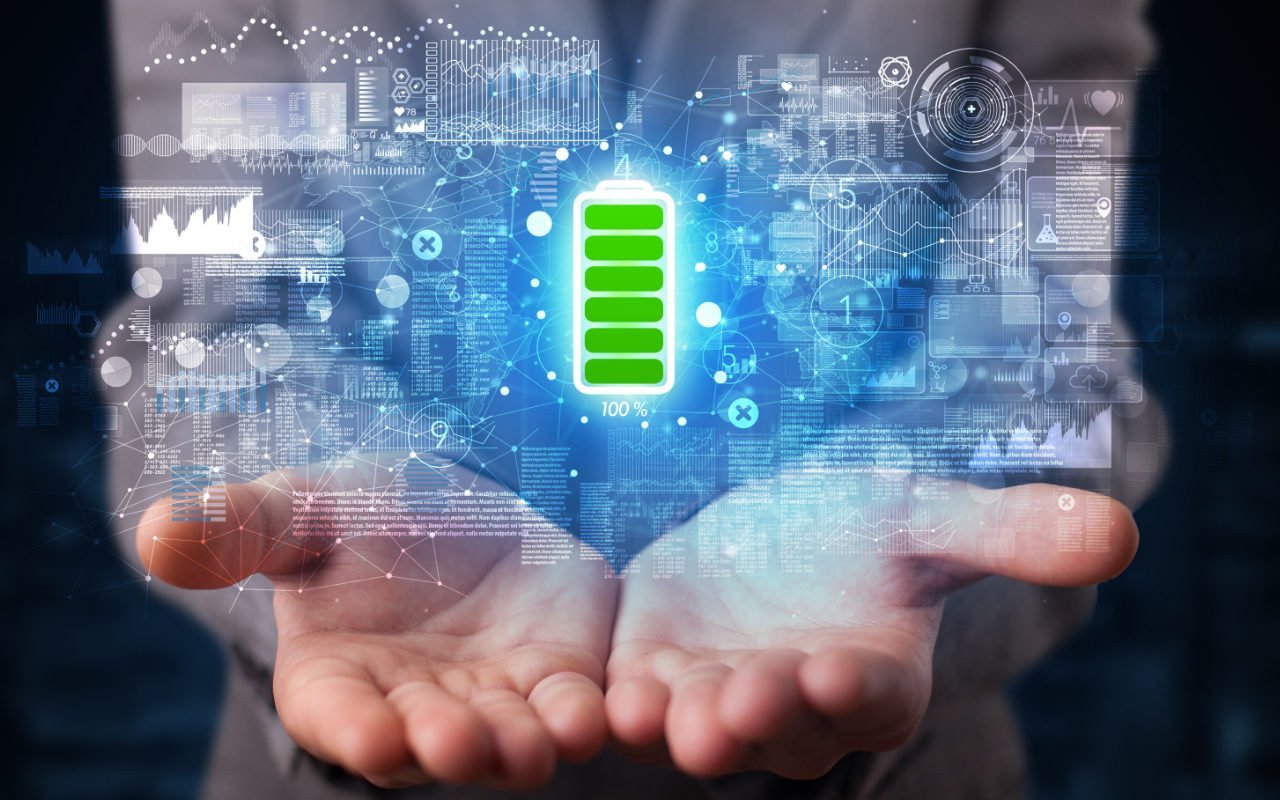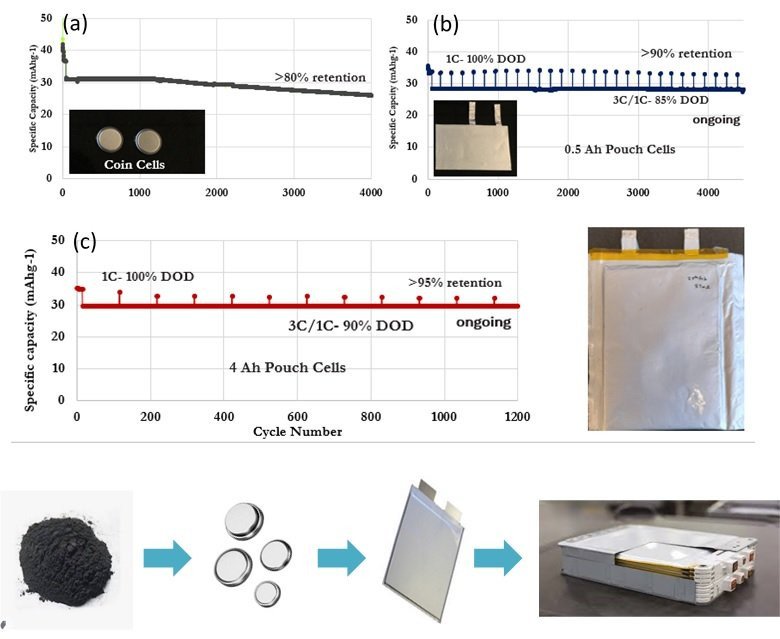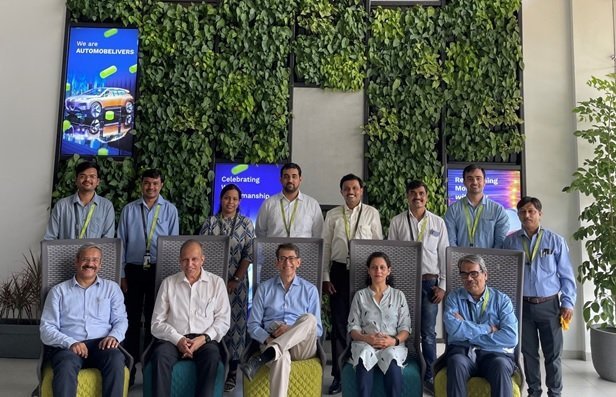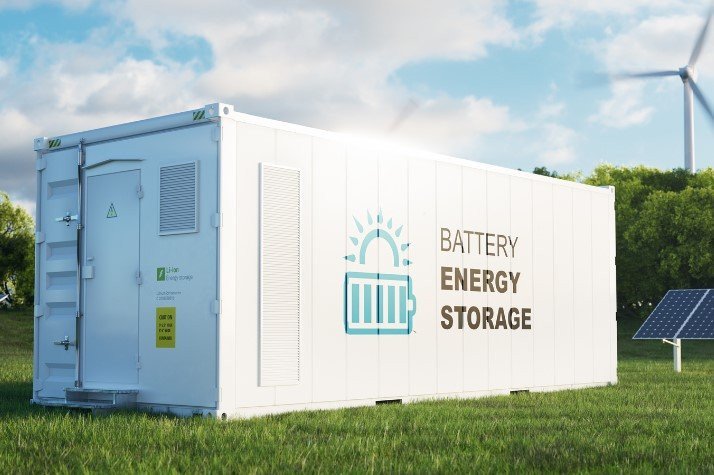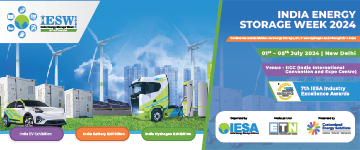India needs synergistic collaborations to foster indigenous cutting-edge battery development
The Industry and Academia partnership is crucial to the inventions of new materials, applications, and technologies. In this article, Prof. Satishchandra B. Ogale, Emeritus Professor - IISER Pune, takes us through the remarkable team efforts in developing the first indigenous sodium-ion battery technology through the IISER-KPIT alliance. This collaboration, to the best of our knowledge, is one of its kind in the domain of battery technologies in India.
The whole world is going through a clean energy revolution with the express and pressing needs set by the clean environment goals. One of the key targets in this context is to control vehicular pollution, which has severe local consequences in urban areas along with global consequences for the whole planet. This has necessitated the need to go for electric mobility in a major way by shunning our current excessive dependence on highly polluting gasoline and diesel-based transportation. While most countries have started taking steps along with these directions, several technical issues remain to be resolved to address the cost and safety matters for the large-scale robust implementation of the proposed potential solutions. Separately, there are humongous issues that relate to natural resources available to us globally, but importantly their distribution amongst different countries. The attendant issues are so intertwined and strategic that they could define international relations and interdependencies in the future.
It is in this respect that most developed and developing countries may have to target indigenous developments mostly, if not fully, relying on the indigenous materials resources and strategies for their purification to the device-worthy grade. For countries and societies, which for many decades have depended on borrowed technologies and specialty materials without any high-tech manufacturing base, this is a stupendously uphill task.
While the government can and should provide substantial support, both financial and logistical, it is for all the wheels of modern society to engage and work synergistically to deliver economically feasible robust clean energy solutions. One of the significant modus operandi that has helped developed countries to make spectacular progress in terms of meeting the goals of deliverables in such cutting-edge fields is the vibrancy of Industry-Academia collaboration. It is this angle that has largely been missing in India for many decades for various reasons.
What is important now is to recognize and understand that we must make this work if we need to catch the bus (electric bus!) and not lose a huge opportunity in economic terms. It will be good if we fully appreciate that we have no option but to start working on such collaborations in the express interest of national technology independence. Mutual trust in the capabilities of academia and industries cannot be developed overnight without working together initially through small projects and developing into major ones. Unfortunately, there is no time for baby steps especially in the field of e-mobility. The competition is too intense internationally, and we cannot hope to survive and stand up to this challenge unless we act on an urgent basis.
IISER Pune launched a Centre for Energy Science (CES) in 2016 and since then there has been ongoing significant research in the field of clean energy for the past five-six years. Before that, a similar effort was also launched at the National Chemical Laboratory (CSIR-NCL). This included research on supercapacitors, battery materials, green hydrogen, next-generation solar cells, etc., and was sponsored by government funding agencies such as the DST, MNRE, MEITY, etc. Both these institutes were also involved in some vibrant Indo-UK collaborative projects in related fields.
At CSIR-NCL, it was a pleasant coincidence that Ravi Pandit, Founder, and CEO - KPIT Pune connected with us to find out what research we had been doing, to explore whether any fruitful joint work could be initiated. KPIT has been one of the leaders internationally in automotive software technology and had an emergent interest in the hybrid vehicle area. At that time, we discussed a few overlapping interest areas such as solar energy, use of hydrogen injection in vehicle fuel to reduce polluting emissions, and supercapacitor development for hybrid electric vehicles (which was KPIT's interest at the time).
Initially, through small projects, we worked on all these three areas for two to three years at CSIR-NCL with some very interesting and successful outcomes. One of the hallmarks of this Industry-Academia engagement was the intense meetings every week that were attended by the research group as well as Mr. Pandit himself along with some of his senior technical team members. Through these meetings, it soon became clear that full e-mobility rather than the hybrid concept is the way to go for the emergent and distant future. This brought us to forge a creative and vibrant alliance for indigenous battery development.
With so much development going on around in battery research, both in scientific and technical domains, explorations of commercial prospects had to be evaluated with a judicious mindset. Additionally, the feasibility of 'commercialization' continues to be a critical aspect. It was very important to take a call on whether to go for the development of the Li-ion battery or any other emerging battery chemistry.
As a team of enthusiastic researchers working in the laboratory, the deep-diving discussions that we had with the industry leaders and experts on issues like raw material availability, scalability, manufacturability, and economic feasibility, were completely eye-opening. These considerations are very crucial in taking laboratory research to realistic application, especially in a sector that is internationally so crowded with extraordinary minds and skillsets, both in academia and industry. The burden of these decisions is of course far more on the industry leaders because it is their money that is at stake. For researchers, it is also a stress to not publish some interesting work along the line so as not to lose the initiative to others through sharing knowledge before securing patents. Such issues at very taxing and onerous for the team members and stakeholders, since there is no obvious answer to some of these questions and bottlenecks.
Through all this intensive discussion process, it was decided to go for Na-ion battery instead of Li-ion battery by looking at the targeted 'e-mobility' application segments of interest to KPIT with Indian markets and context.
An alkali-ion battery appears to be conceptually a straightforward device architecture involving an anode, a cathode, electrolyte, and separator, etc. However, in reality, it is unbelievably complex in terms of making all these components work synergistically and cooperatively to render a desirable high specific capacity value, rate capacity, cycling stability, etc. within the industrially acceptable limits on costs. It took almost four to five years to address every little aspect about the battery materials choices, precursor availability/ cost considerations, materials synthesis/ characterization/ scalability, the corresponding science, device design, engineering, testing, economics (the last four being KPIT strengths), etc.
Also, some of the scientific staff members working on the project at IISER were hired by KPIT who also invested in the establishment of some in-house prototype cell and module-making facilities. The project at IISER continued with KPIT's sustained funding with additional manpower. Then came the stage of scaling up to multiple layered / high-capacity cells. Initially, some facilities at CMET Pune (Dr. Bharat Kale) were accessed to make small pouch cells. Later, for larger capacity prototypes, the impressive battery fabrication infrastructure established at IIT Bombay (Dr. Sagar Mitra, NCPRE) was utilized.
The lithium-ion battery is at present the workhorse technology for EVs and many other applications. However, we consciously and meticulously studied all technological challenges posed by all types of Lithium-ion batteries (energy as well as power batteries), especially in the Indian context. We also studied potential raw material supply chain issues of lithium and cobalt precursors and focused all attention on the Sodium-ion chemistry, which we strongly feel has the potential to revolutionize the energy storage landscape in India.
Following is the status and some key highlights of the very first indigenously developed practical and scalable sodium-ion battery technology that has come out of this remarkable collaborative effort:
- Indigenously developed advanced materials for cathode, anode, and electrolyte for a sodium-ion battery solution. The raw materials are selected keeping in mind ease of availability or production capability in India.
- Scaled up synthesis process of cathode/anode materials up to 10 kg
- After a rigorous phase of performance tuning and long cycle life (>4000 cycles) testing at the coin cell level (half and full cell), the prototypes were gradually scaled up to 5Ah capacity pouch cells. Almost >1500 cycles of performance (testing still in progress) have been clocked with >90 percent capacity retention. (Refer Figure 1)
- The solution development has been done ensuring proven manufacturing technologies used in lithium-ion batteries so that economies of scale are applicable.
- Development and testing of modules of up to 1-3 KWhr are underway.
Some highlights of the solution are as follows.
- No dependency on lithium and cobalt. All raw materials are earth-abundant.
- Fast charging capability: 80 percent charging in 10 mins
- High Cycle Life: 80 percent retention for a minimum of 5,000 cycles
- The deeper depth of discharge to 90 percent
- Wide operating temperature window:
Having fabricated and tested several pouch cells successfully for their impressive rate capability and cycling stability over several thousand cycles, we are now contemplating concrete applications development in different areas in mobility (buses, e-rickshaws, etc.) as well as stationary applications. So far, the focus was on a high-power battery solution, hence a moderate energy density was accepted. However, the team is now gearing towards a higher energy density battery solution in the next version.
We believe that the successful collaboration between the research labs and commercial enterprises will pave a path for future growth in such collaborative ventures. In this exciting and enriching journey, the team achieved very encouraging results that will redefine the energy storage prospects, options, and opportunities in India and make these technologies viable in the commercial market. It also addresses concerns of reuse and recyclability, which is not provided by the existing battery technology in India.
The key collaborators of the IISER-KPIT alliance: (From left to right) Front row – Mr. Tejas Kshatriya, Prof. Satish Ogale, Mr. Ravi Pandit, Dr. Sarika Kelkar, Mr. Chandrashekhar Chincholkar. Back row - Pranav Gaigawali, Anil Jadhav, Dr. Mandakini Biswal, Dr. Yogesh Gawli, Dr. Anil Suryawanshi, Umesh Patil, Ankur Singh, Rajendra. (Not in the photo – Dr. Dhanya Puthusseri, Dr. Abhik Banerjee, Nikhil Kumar, and Pawan Sharma)


